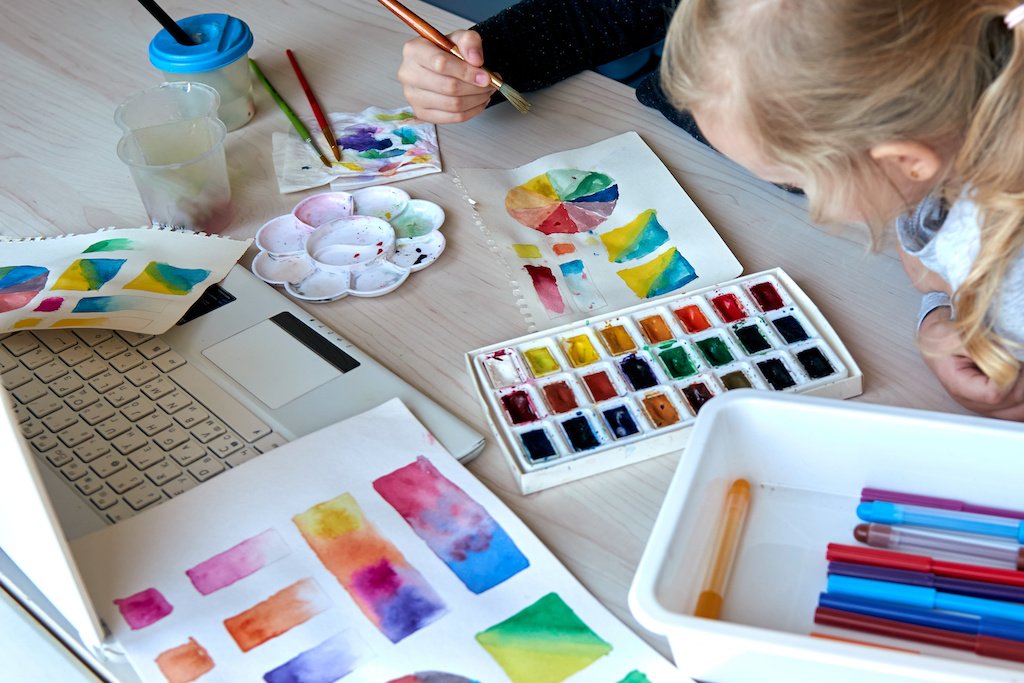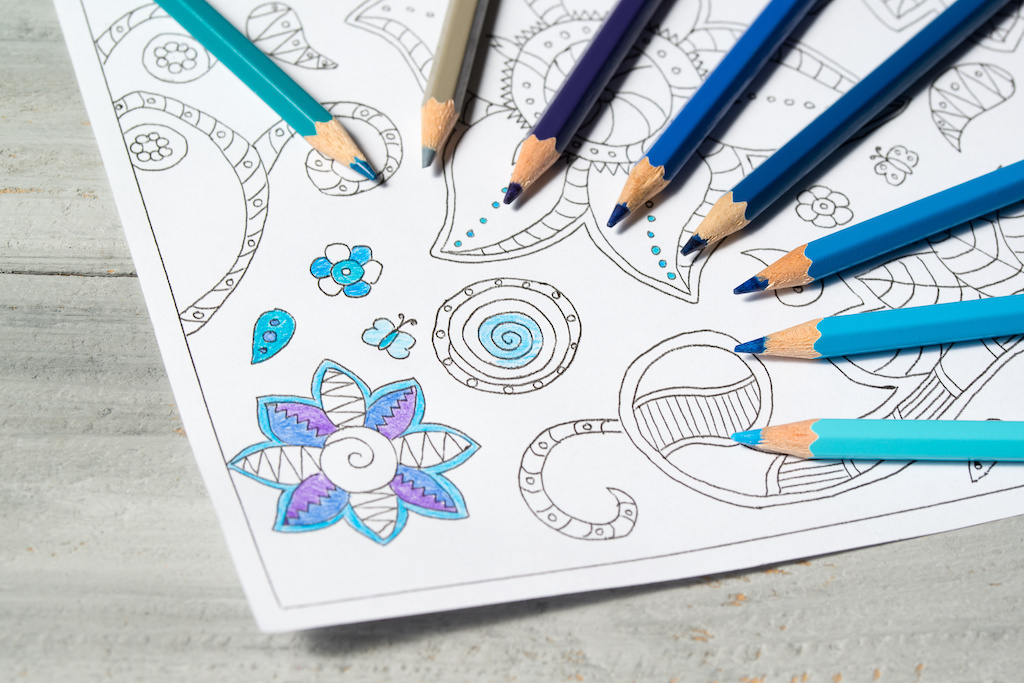
Color Theory for Kids: A Simple Guide to Understanding Colors and Their Meanings
Do you ever wonder why certain colors make you feel happy or calm? Or why some colors seem to go well together while others clash? These questions can be answered through the fascinating study of color theory. In this simple guide, we will explore the basics of color theory, the significance of the color wheel, the importance of color relationships, the psychology of colors, and practical applications that can be used in art projects and everyday life. Let's dive right in and unlock the world of colors!
Understanding the Basics of Color Theory
Color theory is a fascinating subject that delves into the study of how colors interact with one another and the emotions they evoke. It is a fundamental concept that has been explored and utilized by artists, designers, and even marketers for centuries. By understanding the principles of color theory, kids can learn to create visually pleasing combinations and express their creativity through various art forms.
What is Color Theory?
Color theory is a multidisciplinary field that encompasses various aspects of color, including its properties, relationships, and effects. It explores the science behind colors, such as how they are perceived by the human eye and how they can be created through the mixing of different pigments or light wavelengths.
One of the key components of color theory is the color wheel, which is a visual representation of the primary, secondary, and tertiary colors. It helps to illustrate the relationships between different colors and serves as a useful tool for artists and designers to create harmonious color schemes.
Furthermore, color theory also delves into the psychological and emotional aspects of color. Different colors have the power to evoke specific emotions and associations. For example, warm colors like red and orange tend to elicit feelings of energy and excitement, while cool colors like blue and green evoke a sense of calmness and tranquility.

The color wheel is a key component of color theory. Adobe Stock/ OneWellStudio
The Importance of Color Theory
Color theory is not just for artists. It can be useful in various fields, such as interior design, fashion, and even marketing. In interior design, understanding color theory allows designers to create harmonious and visually appealing spaces by selecting the right color combinations for walls, furniture, and accessories.
In the world of fashion, color theory plays a crucial role in determining color trends and creating visually striking outfits. Designers carefully consider color combinations and their effects on the overall look and feel of a garment. By understanding color theory, fashion designers can create collections that evoke specific emotions and make a lasting impression.
Moreover, color theory is also essential in marketing and branding. Companies often use specific colors in their logos and advertisements to convey certain messages or evoke desired emotions. For example, fast-food chains often use red and yellow in their branding to stimulate hunger and create a sense of urgency.
By understanding how colors relate to each other and the emotions they evoke, kids can effectively communicate their messages and add visual interest to their creations. Whether they are painting a picture, designing a room, or creating a marketing campaign, a solid understanding of color theory can greatly enhance their artistic endeavors.
The Color Wheel and Its Significance
The color wheel is a visual representation of the relationships between colors. It is a tool that artists, designers, and even scientists use to understand how colors interact with each other. By studying the color wheel, we can gain a deeper understanding of color theory and its significance in various fields.
Exploring Primary Colors
Primary colors are the building blocks of all other colors. The three primary colors - red, blue, and yellow - cannot be created by mixing other colors together. They are considered pure and fundamental. Understanding primary colors is essential because they form the basis for creating all other hues.
Let's take a closer look at each primary color:
- Red: Symbolizing passion and energy, red is a vibrant and attentiongrabbing color. It is often associated with love, power, and excitement.
- Blue: Representing calmness and serenity, blue is a cool and soothing color. It is commonly associated with trust, loyalty, and tranquility.
- Yellow: Evoking feelings of happiness and optimism, yellow is a bright and cheerful color. It is often associated with sunshine, joy, and creativity.
By understanding the characteristics and symbolism of each primary color, we can better utilize them in our artistic and design endeavors.

The color blue stands for calmness and tranquility. Adobe Stock/dash1502
Discovering Secondary and Tertiary Colors
When two primary colors are combined, they create secondary colors. Mixing red and yellow gives orange, blue and yellow make green, and blue and red produce purple. Secondary colors are often seen as more complex and dynamic than primary colors.
Let's delve deeper into the world of secondary colors:
- Orange: Combining the energy of red and the cheerfulness of yellow, orange is a warm and vibrant color. It is often associated with enthusiasm, creativity, and warmth.
- Green: Blending the calming nature of blue with the brightness of yellow, green is a refreshing and harmonious color. It is commonly associated with nature, growth, and balance.
- Purple: Fusing the intensity of red with the tranquility of blue, purple is a mysterious and regal color. It is often associated with creativity, spirituality, and luxury.
Tertiary colors are formed by mixing a primary color with a neighboring secondary color. For example, combining blue and green results in teal. Tertiary colors offer a wide range of possibilities and can add depth and complexity to any color palette.
Understanding the color wheel and the relationships between primary, secondary, and tertiary colors allows us to create harmonious and visually appealing compositions. Whether it's in art, design, or even interior decorating, the color wheel serves as a valuable tool in our creative endeavors.
Diving into Color Relationships
Complementary Colors and Their Impact
Complementary colors are found opposite each other on the color wheel. When placed side by side, they create a high-contrast effect that can be visually striking. For example, red and green are complementary colors. Understanding complementary colors helps kids create artwork that commands attention.
Analogous Colors and Harmony
Analogous colors are a range of colors found next to each other on the color wheel. These colors share a common undertone and create a harmonious visual effect. For instance, red, orange, and yellow are analogous colors. Knowing how to use analogous colors can help kids achieve a balanced and pleasing composition.

Mixing complementary and analogous colors can lead to a beautiful result. Adobe Stock/kostikovanata
The Psychology of Colors
How Colors Influence Emotions
Colors have powerful impacts on our emotions. For example, warm colors like red and orange are associated with energy and excitement, while cool colors like blue and green can evoke calmness and relaxation. Kids can use this knowledge to create art that conveys specific emotions they want to express.
The Cultural Meanings of Colors
Colors can also hold symbolic meanings that vary across cultures. For instance, in Western culture, the color white is often associated with purity and peace, while in some Eastern cultures, it represents mourning. Understanding cultural meanings can help kids appreciate diversity and expand their artistic interpretations.
Practical Applications of Color Theory
Using Color Theory in Art Projects
Now that we have explored the fundamentals of color theory, let's put it into practice! Kids can use primary, secondary, and tertiary colors to create vibrant paintings, drawings, or collages. Experimenting with color relationships and exploring the emotions they evoke will add depth and meaning to their creative endeavors.
Applying Color Theory in Everyday Life
Color theory can extend beyond art and seep into our daily lives. Kids can apply it when choosing clothing combinations, decorating their bedrooms, or even organizing their school supplies. By selecting colors mindfully, they can create spaces and arrangements that evoke the desired ambiance and reflect their unique personalities.
By delving into the world of color theory, kids can broaden their understanding of various subjects while nurturing their artistic abilities. The knowledge gained will enable them to create captivating compositions, convey emotions effectively, and appreciate the incredible impact colors have on our lives. So, let's embrace the wonderful world of colors and unleash our creative flair!
